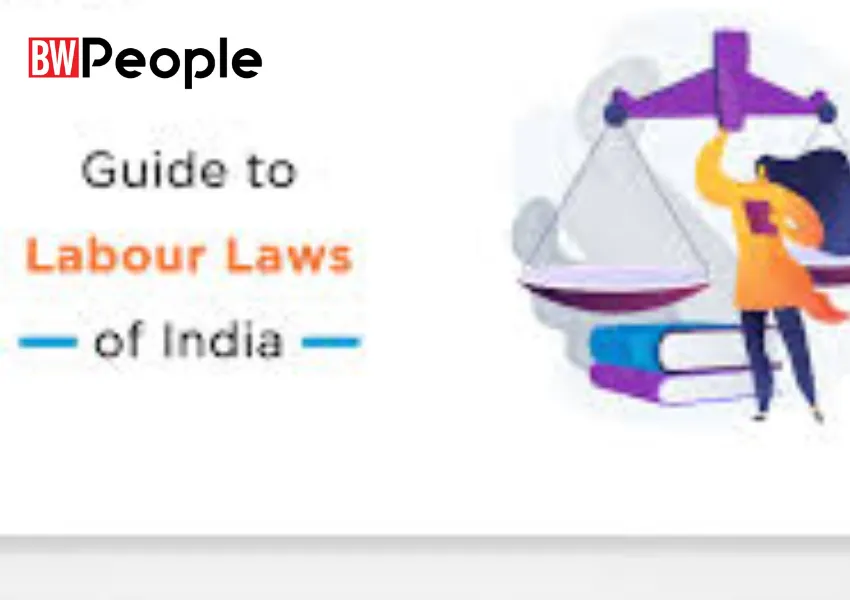Blog Content Overview
- 1 Treelife Resources
- 1.1 Explore our resources to fuel your success and propel your business forward.
- 1.2 Latest Posts
- 1.2.0.1 Mapping India’s space-tech industry and regulatory landscape: A launchpad for innovation & growth
- 1.2.0.2 Essential Terms You Need to Know : Startup Ecosystem Edition
- 1.2.0.3 Treelife Unveils Comprehensive Guide To Labour Laws For Startups
- 1.2.0.4 Demystifying the ‘Transaction Flow’ of VC Deals
- 1.2.0.5 Investment Activities By The Limited Liability Partnership
- 1.2.0.6 Rights Issue by Way of Renunciation
- 1.2.0.7 Convening and Holding a General Meeting at a Short Notice
- 1.2.0.8 Streamlining Financial Compliance for a Health-Tech Innovator
- 1.3 Thought Leadership
- 1.3.0.1 Tiger Global Ruling: Supreme Court on TRCs, Treaty Protection and Offshore Structures
- 1.3.0.2 Setting Up a Wholly Owned Subsidiary in India – Incorporation Guide
- 1.3.0.3 Foreign Company Registration in India – Complete Guide [2026]
- 1.3.0.4 Setting up a Business in India by Foreign Company – Regulations & Process
- 1.3.0.5 Final Tax Return After Death in India: Guide for Legal Heirs
- 1.3.0.6 CodeKarma raises $2.5M Pre-Series A in Treelife-advised round led by Prosus Ventures, Accel, and Xeed Ventures
- 1.3.0.7 Treelife advised OnArrival funding with seamless structuring, drafting, and negotiation.
- 1.3.0.8 Piper Serica invests INR 3 crore in deep-tech propulsion startup Thrustworks Dynetics
- 1.3.0.9 SINE IIT Bombay invests INR 1 crore in Thrustworks Dynetics with Treelife’s transaction support
- 1.3.0.10 Treelife advises Cookware Brand Ember on $3.2Mn Seed Round
- 1.3.0.11 Setting Up a Wholly Owned Subsidiary in India – Incorporation Guide
- 1.3.0.12 Foreign Company Registration in India – Complete Guide [2026]
- 1.3.0.13 Mandatory Probate Rule Scrapped: India’s Succession Law Reform
- 1.3.0.14 New Labour Law in India 2025 – Complete Guide to New Labour Codes
- 1.3.0.15 Contracts of Indemnity in India- Meaning, Key Elements, Guarentee
- 1.3.0.16 IFSCA tightening scrutiny on GIFT City AIFs – Money Control Exclusive adds Jitesh Agarwal’s note
- 1.3.0.17 Lenskart built its empire on franchisees. Now it’s battling them in courts
- 1.3.0.18 Treelife featured and authored a chapter in a report, “Funds in GIFT City- Scaling New Heights” by Eleveight
- 1.3.0.19 Blinkit 2.0: Can Zomato’s Juggernaut Fight Off Quick Commerce Rivals?
- 1.3.0.20 Startup India’s Post – Mapping India’s Spacetech Industry & Regulatory Landscape,
- 1.3.0.21 Revised Regulatory Framework for Angel Funds in India (2025)
- 1.3.0.22 SEBI Revamps Angel Fund Framework to Boost Startup Funding
- 1.3.0.23 SEBI Mandates New Certification Norms for AIF Managers
- 1.3.0.24 IFSCA Approves “Platform Play” for Fund Management Entities at GIFT IFSC
- 1.3.0.25 CBDT Notifies TDS Exemption for Payments to IFSC Units (Effective from July 1, 2025)
- 1.4 We Are Problem Solvers. And Take Accountability.
Latest Posts

August 12, 2024 | Media Feature
Mapping India’s space-tech industry and regulatory landscape: A launchpad for innovation & growth
Read More


August 7, 2024 | Media Feature
Treelife Unveils Comprehensive Guide To Labour Laws For Startups
Read More





July 26, 2024 | Case Studies
Streamlining Financial Compliance for a Health-Tech Innovator
Read More
Thought Leadership

Tiger Global Ruling: Supreme Court on TRCs, Treaty Protection and Offshore Structures
Over the last couple of days, many of you would have seen headlines around the Supreme Court’s decision in the Tiger Global case. Having read the judgment closely, we felt it would be useful to share a short, practical note on what the Court has actually held and why this…

Setting Up a Wholly Owned Subsidiary in India – Incorporation Guide
Introduction: Set Up a WOS in India Setting up a wholly owned subsidiary in India has emerged as the most preferred market-entry strategy for foreign companies seeking long-term presence, operational control, and regulatory flexibility. A wholly owned subsidiary (WOS) is an Indian company in which 100% of the share capital…
![Foreign Company Registration in India - Complete Guide [2026] foreign company and business registration in india](https://treelife.in/wp-content/uploads/2025/09/foreign-company-and-business-registration-in-india.webp)
Foreign Company Registration in India – Complete Guide [2026]
Why Register a Foreign Company in India? Overview of India’s Business Environment In 2026, India presents a highly dynamic and lucrative business environment for foreign companies. With a rapidly growing economy, diverse consumer base, and increasing digital infrastructure, the country is one of the top destinations for international business expansion….

Setting up a Business in India by Foreign Company – Regulations & Process
Why India is a Global Investment Magnet? India’s Economic Landscape (2025 Snapshot) India has solidified its position as one of the world’s most attractive investment destinations, driven by rapid economic expansion, digital transformation, and sustained policy reforms. According to the International Monetary Fund (IMF, 2025), India is now the 5th…

Final Tax Return After Death in India: Guide for Legal Heirs
“Nothing is certain except death and taxes.” – Benjamin Franklin (1789) For most families, this famous quote feels philosophical until it becomes painfully real. Often, it is only after receiving a notice from the Income Tax Department that families realise a crucial legal truth: tax responsibilities do not automatically end…



Setting Up a Wholly Owned Subsidiary in India – Incorporation Guide
Introduction: Set Up a WOS in India Setting up a wholly owned subsidiary in India has emerged as the most preferred market-entry strategy for foreign companies seeking long-term presence, operational control, and regulatory flexibility. A wholly owned subsidiary (WOS) is an Indian company in which 100% of the share capital…
![Foreign Company Registration in India - Complete Guide [2026] foreign company and business registration in india](https://treelife.in/wp-content/uploads/2025/09/foreign-company-and-business-registration-in-india.webp)
Foreign Company Registration in India – Complete Guide [2026]
Why Register a Foreign Company in India? Overview of India’s Business Environment In 2026, India presents a highly dynamic and lucrative business environment for foreign companies. With a rapidly growing economy, diverse consumer base, and increasing digital infrastructure, the country is one of the top destinations for international business expansion….

Mandatory Probate Rule Scrapped: India’s Succession Law Reform
A Strategic, Legal & Operational Guide for Founders, Family Offices and Institutions (2026) India has recently undertaken a significant reform in its succession framework by removing the requirement of compulsory probate rule for certain categories of wills. Previously, in metropolitan jurisdictions such as Mumbai, Kolkata, and Chennai, beneficiaries could not…

New Labour Law in India 2025 – Complete Guide to New Labour Codes
DOWNLOAD PDF India has introduced a historic regulatory change with the new labour law in India 2025. For the first time since Independence, 29 separate labour legislations have been consolidated into four unified Labour Codes, transforming how organisations manage employment, wages, social security, and workplace safety.This represents a paradigm shift…

Contracts of Indemnity in India- Meaning, Key Elements, Guarentee
Introduction What is a Contract of Indemnity? A contract of indemnity is defined under Section 124 of the Indian Contract Act, 1872 as an agreement where one party promises to save the other from loss caused by the conduct of the promisor or any other person . In simple terms,…


Revised Regulatory Framework for Angel Funds in India (2025)
The Securities and Exchange Board of India (SEBI) recently announced a major overhaul to the regulatory framework for Angel Funds under the Alternative Investment Funds (AIF) Regulations, 2012. This new framework, introduced in 2025, aims to enhance transparency, improve operational clarity, and encourage investor participation. In this article, we’ll explore…

SEBI Revamps Angel Fund Framework to Boost Startup Funding
In a significant move to invigorate India’s startup ecosystem, the Securities and Exchange Board of India (SEBI), during its board meeting on June 19, 2025, approved substantial changes to the Angel Fund Framework. These revisions are designed to unlock more capital for early-stage companies while simultaneously ensuring enhanced investor suitability…

SEBI Mandates New Certification Norms for AIF Managers
The Securities and Exchange Board of India (SEBI) has officially unveiled revised certification requirements for key investment personnel of Alternative Investment Fund (AIF) managers. This crucial update, detailed in SEBI circular F. No. SEBI/LAD-NRO/GN/2025/249 dated June 25, 2025, aims to enhance professional standards and ensure a higher level of expertise…

IFSCA Approves “Platform Play” for Fund Management Entities at GIFT IFSC
In a significant stride towards enhancing the appeal and accessibility of India’s International Financial Services Centre (IFSC) at GIFT City, the International Financial Services Centres Authority (IFSCA) has approved a groundbreaking “Platform Play” model for Fund Management Entities (FMEs). This pivotal decision was made during the 24th IFSCA Authority Meeting…

CBDT Notifies TDS Exemption for Payments to IFSC Units (Effective from July 1, 2025)
In a significant move set to bolster the International Financial Services Centre (IFSC) ecosystem, the Central Board of Direct Taxes (CBDT) has issued Notification No. 67/2025 on June 20, 2025. This notification, effective from July 1, 2025, exempts certain payments made by mainland entities to eligible units in GIFT City…













